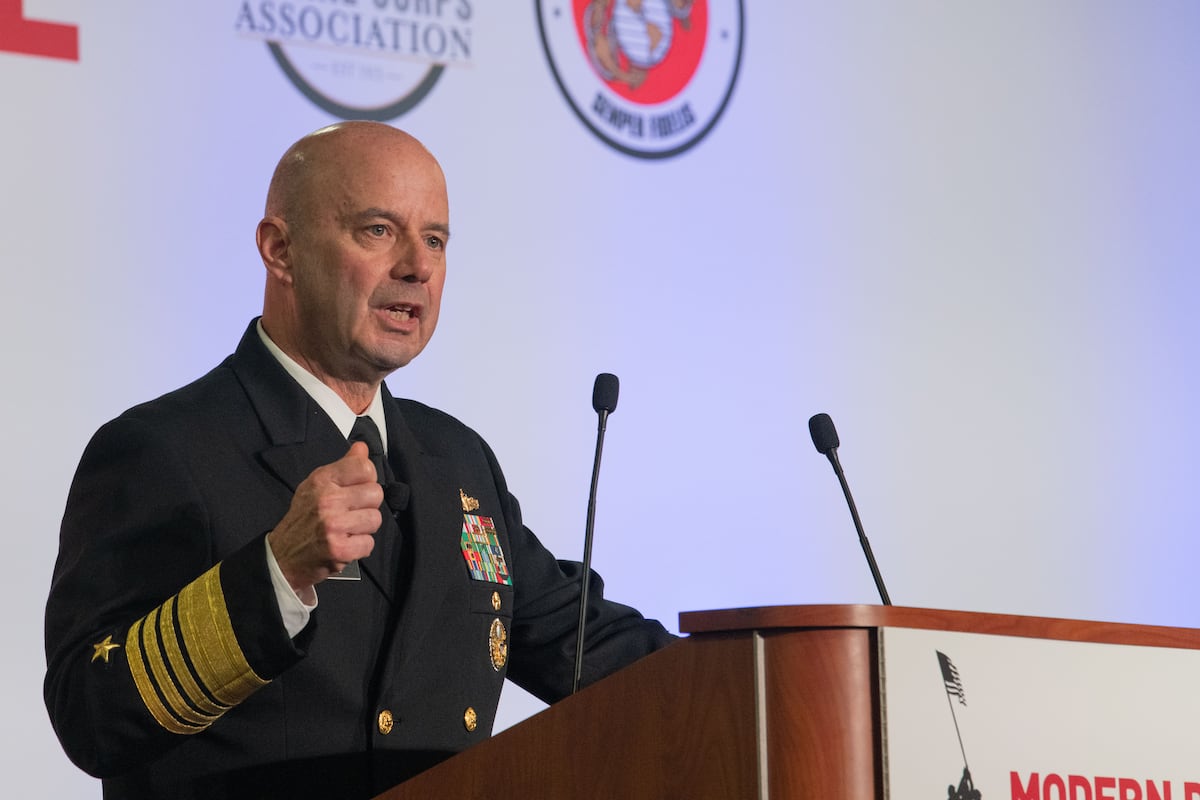The U.S. Navy’s highest-ranking officer detailed the service’s priorities in light of projected adversarial timelines at a Washington defense conference Thursday.
Adm. James W. Kilby delivered a state of the Navy address at Modern Day Marine, where he spoke of fortifying the naval service through recruiting efforts and investments in emerging technology, among other goals, in an effort to prepare for China’s alleged military readiness goal over the next two years.
“Our focus is 2027, and I want everyone’s focus to be on 2027,” Kilby said. “We are responding to a call from our adversary China who said, ‘We want to be ready in 2027.’ Therefore, the United States Navy, and I would argue our military, must be ready in 2027 across all our platforms.”
Preparation for the goalpost year was broken down into several parts.
The first was to ensure that 80% of aircraft, submarines and ships were combat-ready.
Kilby said that resources not undergoing maintenance needed to be “ready to go” and available for fleet commanders responding to battle.
The Navy would continue to incorporate robotic and autonomous systems into the fleet, achieving a hybrid fleet of manned and unmanned systems.
He identified the need for recruiting to fully stock ships with sailors, especially with 23,000 manning gaps at sea.
“I want to burn those down as quickly as possible so that ship is ready and able to perform its mission,” Kilby said.
Quality of service investments were integral, too, a sentiment echoed by Marine Corps leaders earlier in the week.
Kilby specifically mentioned the Barracks 2030 initiative, a nearly $11 billion effort to renovate Marine Corps housing, and promised better Wi-Fi and parking for sailors.
RELATED
The chief naval officer lastly emphasized the importance of warfighter competency — investing in technologies like live virtual constructive training to better prepare sailors for adversarial encounters — and restoring critical infrastructure, such as piers and runways, as the service focuses on strengthening its presence in the Pacific.
Kilby provided a backdrop for the Navy’s efforts, contextualizing the global landscape.
“We are now in a contested environment,” he said.
This was a break from years past, when the service had waded through a more uncontested environment, according to Kilby.
Key tenets of naval operation, such as communication, radar and interactions between sailors and chain of command, are more important than ever, he said, especially in the increasingly hostile Indo-Pacific region with adversaries like the Iran-backed Houthi Rebels wreaking havoc in the Red Sea.
The Navy’s major mission for a long time had been power projection, the practice of transporting a mobile airfield to a location and using destroyers to launch “power ashore,” according to Kilby.
In the uncontested environments of yesteryear, the feat was relatively easy, he explained.
Now, the script has flipped.
With the way things have unfolded in the now-contested environment of the Indo-Pacific, it’s imperative to assert control of the sea from a multitude of domains, including air, space, surface and subsurface, Kilby said.
Traditionally, the Navy adopted an approach of bringing Marines from sea to shore. However, there are new opportunities to invert that dynamic and bring Marine power from shore to sea.
The ability to fire an anti-ship missile from shore at a choke point, or the ability to operate G/ATOR on the ground, achieved newfound significance and importance as a result of this new dynamic, according to the chief of naval operations.
Riley Ceder is a reporter at Military Times, where he covers breaking news, criminal justice, investigations, and cyber. He previously worked as an investigative practicum student at The Washington Post, where he contributed to the Abused by the Badge investigation.
Read the full article here



